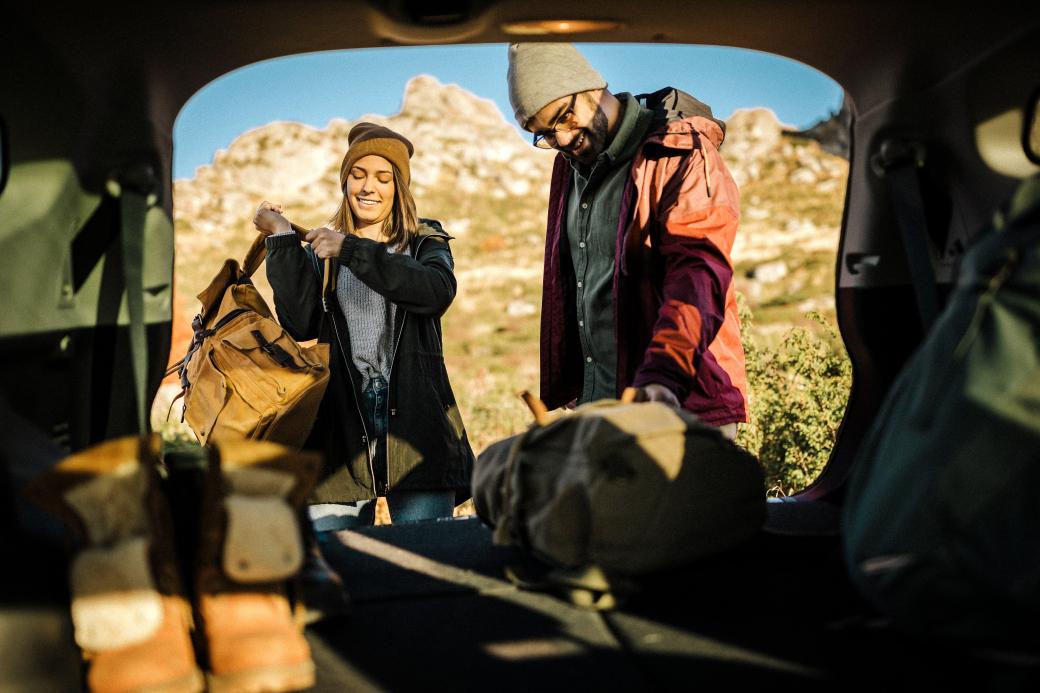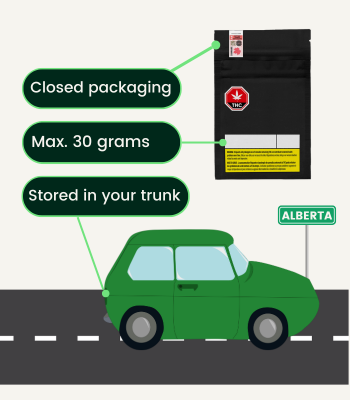
What’s the buzz about cannabis rules?
Whether your exploring Canada or heading abroad, it’s crucial to understand the laws. Within Canada cannabis is legal—but crossing the borders with your stash is not.
And remember, driving high isn’t just risky—it’s illegal. You want a fun trip, both in the car and with the product, so let’s stay safe, stay informed and enjoy the journey responsibly with our tips below.

Traveling with cannabis in Canada
Yes, you can carry legally purchased or legally home-grown cannabis across provinces and territories. But here’s the catch, it needs to be:
- In closed packaging
- Out of reach of drivers and passengers (even your shotgun rider!)
- Only be up to 30 grams
Pro Tip: Edmonton Police Service’s (EPS) golden rule— “Put your Skunk in the Trunk,” enough said.

Traveling with cannabis outside Canada
Heading overseas? Keep in mind that cannabis doesn’t make a great travel souvenir. Taking any form of cannabis—medical or recreational—across borders is a serious criminal offence. Learn more: Canadian Border Services Agency
Real-world example: Sick Canadian man, 64, travelling with CBD medication sentenced to life in Dubai prison
Don’t blaze and drive—here’s why:
Impaired driving isn’t just risky—it’s downright illegal. And it doesn’t matter whether you’re tipsy from wine or mellow from weed. Driving high is still impaired driving, and here’s what you should know:
1. Cannabis seriously impacts driving
- Depth perception and focus take a hit (pun intended).
- Slower reaction times and weaker coordination make it harder to dodge hazards (or even stay in your lane).
- Studies show younger drivers are more likely to drive high than drunk—and that’s not a good flex.
2. Drunk vs. high driving: By the numbers
- Studies have shown that, among younger drivers, driving after using cannabis is more widespread than driving after drinking alcohol.
- In 2023, cannabis was the most frequently detected drug in motor vehicle injuries in Alberta.
- Many young passengers report hopping into cars with high drivers—something no one should normalize.
Remember: Driving high is illegal anywhere—on public roads or private property. Yes, even on that snowy ATV ride.
3. Know the legal limits
Canada enforces strict THC blood-drug concentration limits (Criminal Code - Se. 253a):
- Drivers are considered impaired when they have 2 nanograms (ng) or more of THC per millilitre (ml) of blood. This offence is punishable by a maximum fine of up to $1,000 fine. Drivers with 5 ng or more of THC and alcohol would be a hybrid offence. Hybrid offences are offences that can be prosecuted either by indictment, in more serious cases, or by summary conviction, in less serious cases. (2.5 ng/ml and 50 mg/100 ml or more of alcohol):
- First offence is a $1,000 fine
- Second offence is a 30-day mandatory jail time
- Third offence is a mandatory 120-day imprisonment
For more information you can visit the Government of Canada website.
Alberta also has provincial sanctions and fines in addition to federal penalties that vary depending on the severity of the incident. Check out Alberta’s impaired driving penalties here.
4. Cannabis significantly affects crucial functions for operating a motor vehicle
- It impairs depth perception, concentration and attention span, making it difficult to be aware on the road.
- It slows your reaction time and decreases muscle strength and hand steadiness. This inhibits your ability to respond to hazards and makes you a hazard to others.
Drug detection
When cannabis was legalized special training and drug detection methods were put in place, so police officers had the ability to test for impaired driving—Standardized Field Sobriety Testing (SFTS).
Oral screening tools that detect specific drugs through a saliva test have been selected for use on the roadside. As of 2022, 31% of all frontline police in Alberta are trained in SFST.
Want more information on the dangers of impaired driving?
You, Cannabis, and the Law
We teamed up with Constable Seth Dodman-Casemore, a member of the Edmonton Police Service (EPS) for CannabisSense’s 4 in 20 series. Visit here to learn more about impaired driving, legal vs. illegal and more.
